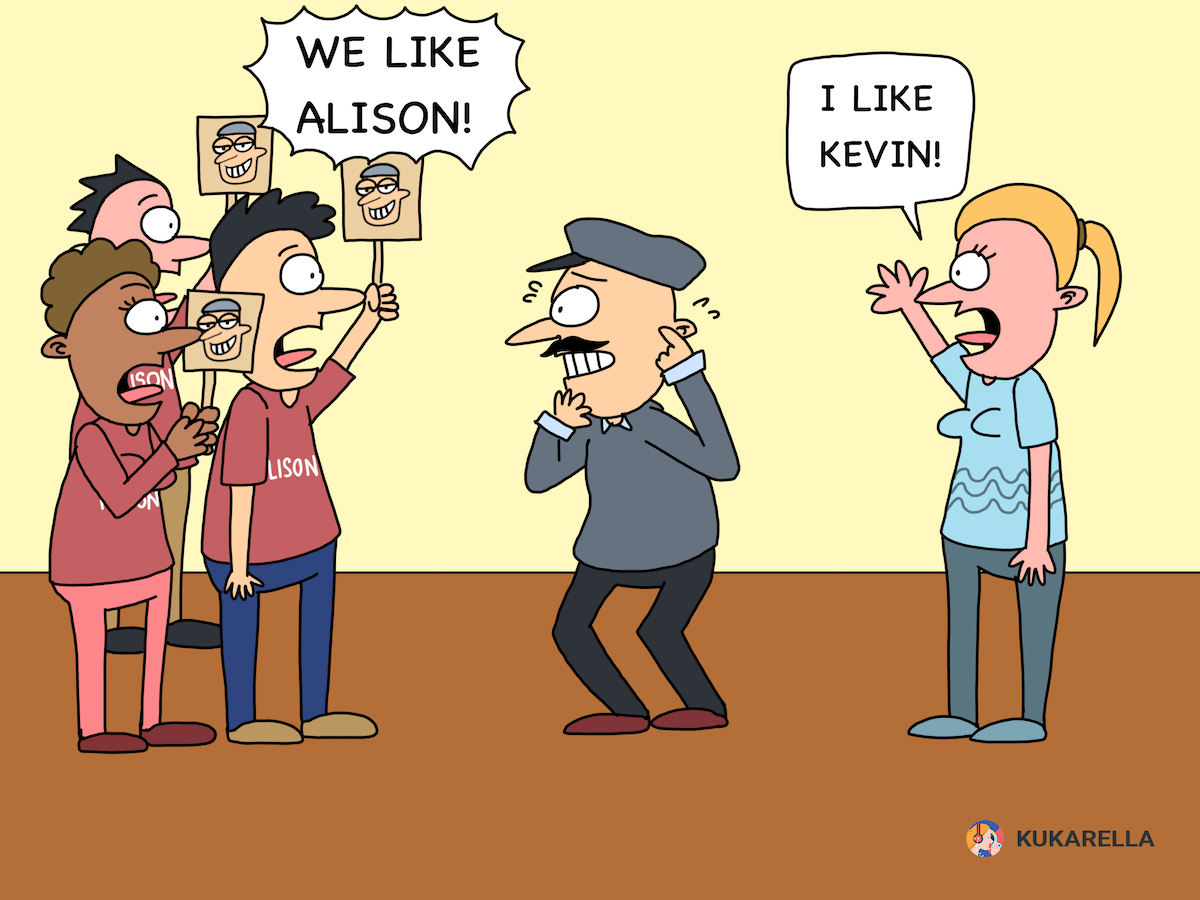Get out of my box!
In 2011, a research team led by David Puts at Penn State University conducted an experiment. The researchers drew a square on the floor of the train station. Next to it was a man whose task was to tell anyone who walked inside the square: ‘Get out of my box.’
As it turned out, when he uttered this phrase in a high voice, almost no one paid attention to him and all the passengers stepped on the square.
However, as soon as he changed his tone and began to utter the same sentence in a low voice, people changed their attitude towards him. They abruptly changed direction and not one of them - not one! - stepped over the line.
What conclusions can we draw from this experiment?
What we say is important. But how we say it is more important. The most correct words will lose their meaning if they are expressed in a colorless voice or tone that does not fit the situation. For example, try to laugh while you are talking about the company’s profits with shareholders. Most likely they will decide that it is time to sell shares. Or try telling a fairy tale to a child in low, loud bass. It is possible that instead of being carried away by history, he or she will get scared and hide from you.
However, this is what companies often do when they create voice-over for their videos, presentations, or commercials. Sometimes they do not strike the right tone. And sometimes, unsure how to choose the right voice, they opt instead to “do no harm” and choose something neutral and characterless; as if choosing something mediocre will make their lack of professionalism less noticeable.

There are countless voice options. The wise old man or the gullible baby. High or medium timbre. Friendly or arrogant tonality. Different temperaments: hot-tempered, melancholic or sanguine. Volume and pace.
We all agree that a voice that is perfect for an orange juice commercial is completely unsuitable for serious treatment. But this raises the question: How do you learn to choose the right key for the right situation in order to reach your audience?
How to learn to “hear” a voice
When animation school students are taught how a film is made, they are often told to turn off the sound and just look at the picture. If you want to conduct an experiment, start watching animation with sound and then turn off the sound for 3 minutes. Compare your impressions.
If there is a last word about the importance of voice-over artists, it may belong to Neil Ross. His theory is that -- especially concerning cartoons with limited animation -- without the sound track, the cartoon is nothing but a series of drawings. Sounds, such as musical accompaniment, noise, and speech, make the film multidimensional and allow you to convey the necessary information. But how do you choose these sounds and voices?
Voice-over artist Valerie Smaldone said that she really did not like the voice in the Panera Bread commercial. In this video, the creative concept illustrates “real life experiences” and the movement toward clean food. Watch the video. What impression does it make on you?
According to Valerie, the voice-over actor on this campaign really got slammed. The voice was incredibly youthful and did not fit the campaign. It also sounded too contrived. She soon learned that similar opinions were represented across social media forums, including Facebook. One post about the commercial ignited a flurry of comments, mostly negative, about the commercial and the voice.
Did you get a sense of what Valerie was talking about? Try listening to the audio again, but this time without the video. What is your impression now? Has it changed?
Very different feelings arise when watching Ram Truck commercials.
The voice belongs to actor Sam Elliott. Do you think his voice matches the brand? Is it credible? Now listen without the video. Do your feelings change? It’s possible that the sense of trust grows even greater. Such a voice will not deceive. Sam Elliott’s voice and Ram Truck go together perfectly, like tea and toast.
A voice should not always inspire immediate confidence. Sometimes it just needs to draw attention and hook the listener, and the easiest way to achieve this is if you knock listeners out of whatever rut they are in. This trick is successfully used by marketer Gary Vaynerchuk. You get the same “give it to me straight” brand voice whether you’re stalking him on Twitter, reading one of his best-selling books, or listening to one of his short, but insightful videos on YouTube. This is an example of accurately reaching your audience. Gary knows his audience and speaks their language.
What's interesting - Now that Gary V no longer needs to prove his status, it’s interesting to note that his voice has increasingly grown calmer, without strong shifts in intonation.
What questions should you ask yourself in order to choose the right voice?
Let's imagine ourselves at the airport, in the departure lounge. You are waiting for your flight, and it seems to be delayed by one hour, because of which you will most likely miss your connecting flight. You are waiting for the announcement. And when you hear it, the announcer states in a cheerful voice that the plane is five hours late. What kind of reaction does this cause for you? At least irritation. Or maybe aggression.
According to one passenger who was interviewed in the focus group, it sounded like she was mocking their inconvenience.
Many airports today use two voice options. Those about delays use a toned-down voice, and then the rest use the more cheerful one.

Want to be heard by your audience and avoid unnecessary costs by remodeling messages? Then you need to regularly ask yourself these questions:
-
Who is my audience? You’re going to talk differently to a forty-year-old mother of three than you will to a six-year-old boy
-
What information do I want to deliver to them?
-
Where will they see or hear my message?
-
What reaction do I expect from them?
This list of choices will help you a little bit:

Answer these questions, and then you will take the first step toward choosing the right voice.
Some voice-over customers may decide that the question of choosing the key and voice is not their task. They leave it to the sound engineer to figure out which voice to use, or to offer a small sample of voices from which the customers can choose. But does the sound engineer know your audience as you know it? Does he understand what your listeners expect from you? Does he know your brand’s history and market position?
It may well be that the sound engineer’s professional experience will help him nail the right voice. But wouldn’t it better to make that decision sooner and without spending too much time and money?
You can conduct a quick experiment that will take a few days and cost you a cup of coffee. And by doing that you can get a response from your audience, which will save a lot of time and prevent errors.
-
Write the text you want to voice over;
-
Go to https://www.kukarella.com/text-to-voice-converter, and enter your text into the editor;
-
Select any of 500+ voices across 60 languages and accents (on Kukarella you get direct access to all voices from Google, Amazon, Microsoft, and IBM);
-
Hit the ‘Convert’ button and in a few seconds you’ll get a bunch of audio files;
-
Share audio with a few representatives of your target audience (preferably more than 50 people) and ask them to rate them on a scale of 1 to 10;
-
Choose the voice that scores highest among your target group

The voice can be pleasant or disagreeable, harsh or warm, exciting to activity or relaxing, like the voice John Butler, 84, who became a YouTube star thanks to his soft voice. One voice can prompt a person to unleash a military conflict; another will calm a crying baby.
A voice cannot be good or bad. It can only be SUITABLE or NOT SUITABLE - this is the main criterion. A beautiful, lush voice, but not appropriate in specific circumstances, will destroy the message. And another voice, perhaps even one that resonates unpleasantly, may be remembered and even bring incredible success to your company. There is no magic to this. It’s just a puzzle. The main thing is to match theme and voice.
It is possible that you already have THAT PERFECT voice in your head. But we would advise to continue the study and get an answer to the next question: Which voice is more suitable for your message - male or female?